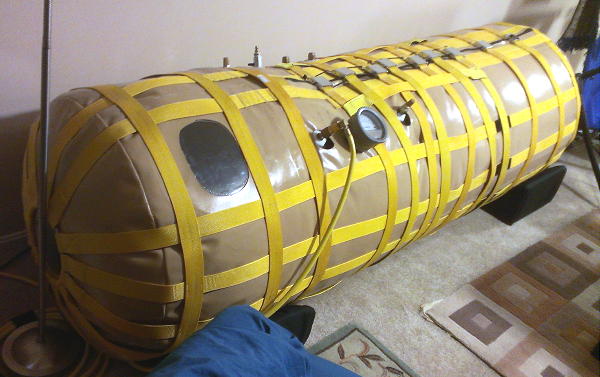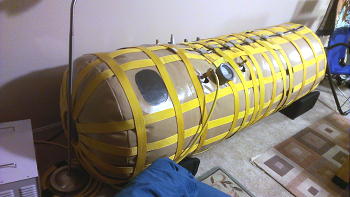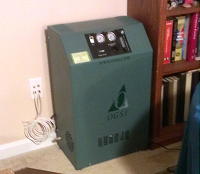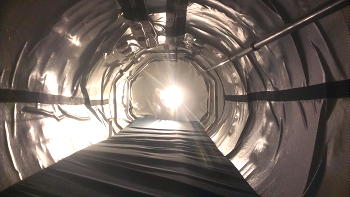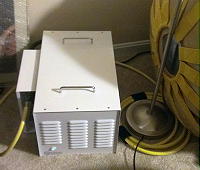LifeNets Hyperbaric Chamber
Posted August 1, 2013
We have been able to provide a hyperbaric chamber that helps expedite healing of various diseases. LifeNets volunteer Aaron Dean is caretaker of this very helpful device and stores it in his Batavia, OH home. Currently it is out on loan helping a young lady who sustained head injuries in a car accident to help with the healing process. You can read the story of our purchase of this chamber in 2010. We also helped with a similar fundraiser in 2009 for a young child.
Hyperbaric medicine, also known as hyperbaric oxygen therapy (HBOT), is the medical use of oxygen at a level higher than atmospheric pressure. The equipment required consists of a pressure chamber, which may be of rigid or flexible construction, and a means of delivering 100% oxygen. Operation is performed to a predetermined schedule by trained personnel who monitor the patient and may adjust the schedule as required. HBOT found early use in the treatment of decompression sickness, and has also shown great effectiveness in treating conditions such as gas gangrene and carbon monoxide poisoning. More recent research has examined the possibility that it may also have value for other conditions such as cerebral palsy and multiple sclerosis.
Several therapeutic principles are made use of in HBOT:
- The increased overall pressure is of therapeutic value when HBOT is used in the treatment of decompression sickness and air embolism as it provides a physical means of reducing the volume of inert gas bubbles within the body; For many other conditions, the therapeutic principle of HBOT lies in its ability to drastically increase partial pressure of oxygen in the tissues of the body. The oxygen partial pressures achievable using HBOT are much higher than those achievable while breathing pure oxygen at normobaric conditions (i.e. at normal atmospheric pressure);
- A related effect is the increased oxygen transport capacity of the blood. Under normal atmospheric pressure, oxygen transport is limited by the oxygen binding capacity of hemoglobin in red blood cells and very little oxygen is transported by blood plasma. Because the hemoglobin of the red blood cells is almost saturated with oxygen under atmospheric pressure, this route of transport cannot be exploited any further. Oxygen transport by plasma, however is significantly increased using HBOT as the stimulus.
- Recent evidence notes that exposure to hyperbaric oxygen (HBOT) mobilizes stem/progenitor cells from the bone marrow by a nitric oxide (·NO) -dependent mechanism. This mechanism may account for the patient cases that suggest recovery of damaged organs and tissues with HBOT.
|
